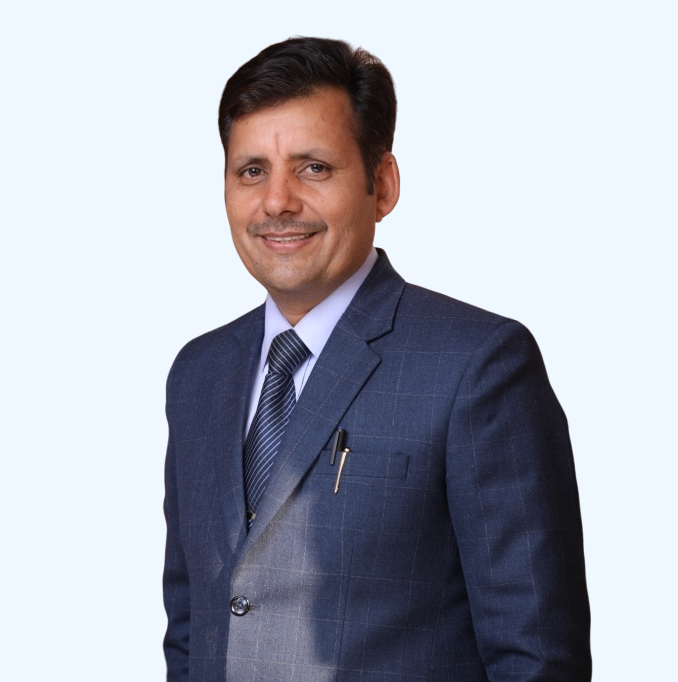Speaker(s)
Keynote Speaker

Bissett School of Business
Mount Royal University, Calgary
e-mobility in India: Challenges, Opportunities and Scope for Future Power Grid
This presentation explores the transformative impact of Electric Mobility (e-mobility) on India’s transportation landscape, presenting it as a sustainable alternative to conventional vehicles. Delving into the challenges, it addresses issues such as charging infrastructure gaps, battery technology limitations, and the need for standardized regulations. Simultaneously, the discourse uncovers opportunities within e-mobility, from fostering innovation in energy storage to catalyzing economic growth through a robust EV manufacturing sector. The presentation outlines the evolving scope for the future power grid, examining smart grids’ role in optimizing energy distribution and accommodating diverse EV charging requirements. It also explores advanced technologies like Vehicle-to-Grid (V2G) systems to enhance grid resilience. In conclusion, the presentation offers a holistic perspective on e-mobility in India, emphasizing the need to surmount challenges, explore opportunities, and shape a resilient power grid for the future.
Invited Speaker

Indian Institute of Technology, Kharagpur
Modelling and simulation of electrokinetic transport in micro-scale over hydrophobic surface
This talk will provide an overview on recent progress on modeling electrically driven transport phenomena associated with the microfluidic devices. Microfluidics, a technology characterized by the engineered manipulation of fluids at the submillimetre scale, has shown considerable promise for improving diagnostics and biology research. In recent years considerable progress has been made in the field of microfluidics. The micro total analysis ( μTAS) and other microfluidic devices being fabricated for chemical, biological and biomedical applications, involves flows of electrolytes and suspensions in micro- sized systems influenced by external forces. Study of such type of flows is referred as microfluidics. The burgeoning field of microfluidics continues to expand its impact on society, finding extensive uses in areas ranging from the research laboratory to the health care industry. One of the most promising applications of microfluidics is the ’lab-on-a-chip’ device. The wellestablished mean-field based approach for transport of ionic solutions considers the long range Columbic interactions between the ions. These theories fail when the crowding of ions becomes significant. In this talk the mathematical model for the transport of ionic fluids will be improved by considering the short range ion steric repulsion due to finite size of the hydrated ions and ion-solvent interactions leading to dielectric decrement and modification of the solvent viscosity. The improved model will be implemented to analyse complicated micro-scale transport phenomena and to validate experimental hypothesis. In recent years, electrokinetic energy conversion for pressure-driven flow through hydrophobic nanochannels has attracted increasing attention from numerous researchers. The laterally mobile adsorbed surface charge modifies the slip velocity condition, which is coupled with the induced streaming potential. Based on the modified model a numerical study supplemented with theoretical analysis on streaming current generation and electrochemical energy conversion involving hydrophobic surface with physiosorbed ions will be illustrated.
Plenary Speaker (s)

Manipal University Jaipur, Rajasthan, INDIA
Mathematical Modelling of Low dimensional Core-Shell Structures for Future Opto-Electronic Applications
The impact of shell structure on the exciton and biexciton binding energies has been studied in core-shell quantum structures using Wentzel-Kramers-Brillouin (WKB) approximation. For excitons, the binding is caused by the Coulombic as well as the confinement potentials while biexciton binding energy is determined by taking into account the exchange and correlation effects. The exciton binding energy was found to increase initially with increasing shell thickness which reaches saturation at larger shell thickness. On the other hand, the biexciton binding energy exhibits a crossover from the bonding to the antibonding state with increasing shell thickness for the smaller core radius of the quantum dot.

Department of IT
Bank of America, Texas USA
The Future of Data Engineering and Data Architecture
Data engineering and architecture are extremely important because of the essential role they play in the process of transforming raw data into insights that can be put into action. These disciplines enable organisations to make well-informed decisions, improve operational efficiency, and maintain their competitive edge in a world that is driven by data. They do this by effectively managing, processing, and structuring data. Applications of data engineering and architecture can be found in a wide variety of fields, including but not limited to the fields of banking, healthcare, and e-commerce. Additionally, they play a significant role in the development of dependable databases, the enhancement of data workflows, the facilitation of real-time analytics, and the support of machine learning activities. In essence, its applications can be broadened to encompass any sector that seeks to utilise data for the purpose of strategic decision-making and innovation.
The future of data engineering and architecture has a great deal of promise, with a particular emphasis on the integration of artificial intelligence, sophisticated analytics, and the ongoing development of cloud technologies. When it comes to building systems that guarantee data quality, privacy, and accessibility, professionals in these domains will be at the forefront of the design process as data quantities continued to increase. As businesses become more aware of the strategic worth of data that has been properly organised and analysed, there is a good chance that the demand for qualified professionals in the field of data management will increase.
Data engineering and architecture serve as pillars that support the future that is driven by data. The transformation of raw data into insights that can be put into action is the key to their significance. The informed decision-making is a direct result of their concentration on contemporary technology and their ability to anticipate future trends.

Sharda University, UP INDIA
Industry 4.0 and its applications in industrial Growth
Industry 4.0, often referred to as the Fourth Industrial Revolution, represents a transformative paradigm shift in manufacturing and industry. It is characterized by the integration of digital technologies, data analytics, the Internet of Things (IoT), and artificial intelligence (AI) into every aspect of industrial processes. This revolution is not merely about technological advancements; it is a holistic approach to optimizing productivity, efficiency, and sustainability across industries. This talk will explore the concept of Industry 4.0 and its applications in driving industrial growth.

